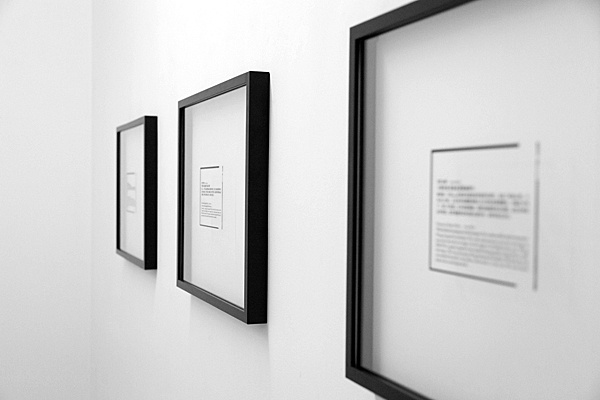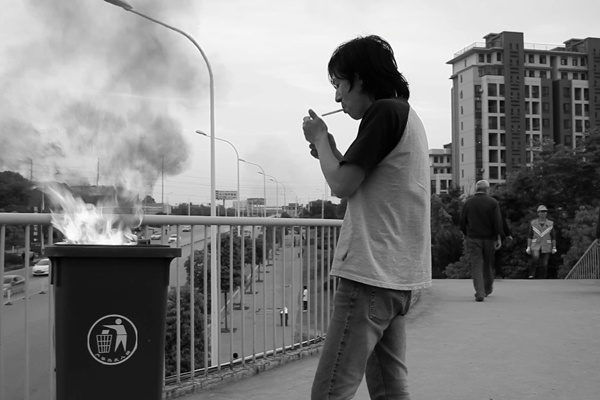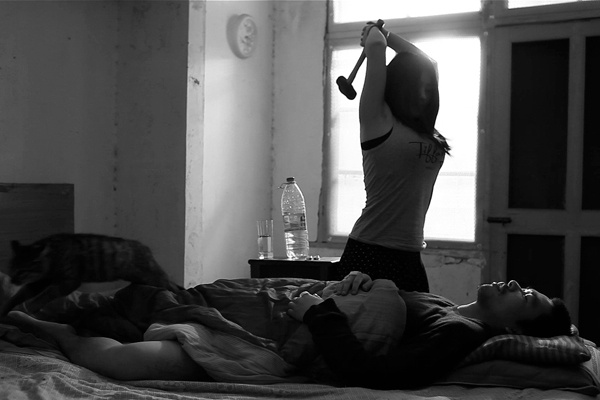Li Yu, born in 1973, Wuhan, Hubei Province, graduated from the Information and Technology Department of Huazhong Normal University, is now working and living in Wuhan.
Liu Bo, born in 1977, Shishou, Hubei Province, graduated from the Oil Painting Department of Hubei Art Academy in 2001, is now teaching at the School of Art and Design of the Wuhan Technical College.
In 2005, Liu Bo saw a catalogue, New York Noir: Crime Pictures from the Daily News Archive, which collected news images of crime scenes on the street over 20-30 years. Liu Bo planned on recapture these scenes, when he found Li Yu and asked him to collaborate, Li Yu suggested us to photograph the social issues on local newspapers of Wuhan.
Then,the news has always been our creative source material, while its timeliness is not as important, that it will eventually become a story of the past. Our works do not aim to restore the news event itself, but to adopt these seemingly reliable textual materials in order to fictionalize another scale of reality. At the same time, we consider our approach as a container, to store our attitudes on life and politics in it.
At the beginning, we didn’t specifically choose local news reports. Later on artist Li Juchuan suggested we do so. It was a good advice, because the stories take place around us, even though we have not witnessed then, but the figures and situations we can identify with. Moreover, all of these insignificant happenings reported on the Wuhan local newspaper could also happen in the other Chinese cities, so we are not completely confined within this one city or one place.
“Every still photograph is a critical moment” (Sontag), whereas video will eventually disappear before your eyes. Early on, we shot many series of photographs, as well as those videos and installations later on, were all aimed at creating a parallel narrative between reality and media phenomenon. Shifting from photography to video and installation was a shift in medium that offered us more means of representation. While through video and installation we have more opportunities to think about time, space and other aspects of photography.
by Li Yu and Liu Bo

 Li Yu, Liu Bo, Slow Shutter, 2013-2014, characters printed on acrylic, framed, each 40x50cm
Li Yu, Liu Bo, Slow Shutter, 2013-2014, characters printed on acrylic, framed, each 40x50cm Exhibition installation
Exhibition installation Li Yu, Liu Bo, Slow Shutter, video stills, 2013-2014, HD Black and white videos, each 00' 01"
Li Yu, Liu Bo, Slow Shutter, video stills, 2013-2014, HD Black and white videos, each 00' 01" Li Yu, Liu Bo, Slow Shutter, video stills, 2013-2014, HD Black and white videos, each 00' 01"
Li Yu, Liu Bo, Slow Shutter, video stills, 2013-2014, HD Black and white videos, each 00' 01" Li Yu, Liu Bo, Slow Shutter, video stills, 2013-2014, HD Black and white videos, each 00' 01"
Li Yu, Liu Bo, Slow Shutter, video stills, 2013-2014, HD Black and white videos, each 00' 01"






